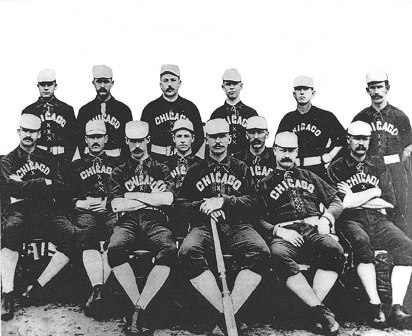With the Chicago White Sox holding onto a slim lead in the American league race, John Brinsley Sheridan of The St. Louis Globe-Democrat said they were in first place because of the pitch he called “(T)he hobo of balldom, it’s course, even when under control, being entirely beyond the influence of the pitcher, so far as the break at the plate is concerned…It is a hobo!”
The “hobo” was the knuckleball of White Sox pitcher Ed Cicotte—never mind Toad Ramsey’s claim to the pitch, Sheridan said it was all Cicotte’s:
“It is a freak delivery; this knuckleball, Cicotte invented it, and is its greatest exponent. Many other pitchers have tried it, some with more or less success. Earl Hamilton did wonderful work with it in 1912. Then he lost control of it. Many others tried it. They use it now and then to this day, but Cicotte is the only pitcher who admits that the knuckleball is responsible for a greater part of his success.”
Cicotte talked to Sheridan about the pitch after he threw a no-hitter against the St. Louis Browns earlier that season:
“I use it very frequently during a game, I vary pace on it, and very frequently I do not ask it to break at all. I throw it with some rotation. When I know a batter is going to hit—when I know and he knows that I must lay a strike over the plate—I pitch the ‘knuckle ball’ with as little rotation as possible, so that it may break as well as possible. The different paces deceive the batter, and the break simply makes it impossible to hit safely save by the greatest fluke.
“The spitball has but one pace—fast. The ‘fadeaway’ had but one pace—medium slow. I can pitch the knuckleball at any pace from medium fast to dead slow.
“I began using this ball when I was a kid. It was always impossible to hit, but I found it very hard to obtain control of it. It was not until I joined Boston in 1908 that I began to get control of the ‘knuckle ball.’ Even then it evaded me for months at a time. When I got it going right I was hard to beat. Even now I often lose control of it.”
Cicotte, who would end 1917 with a league-leading 28 wins and 1.53 ERA, claimed his weight was a factor in his control of the pitch:
“I joined Chicago in 1912 and began to do better with the difficult delivery. I had trouble, however, with my general control. I had been a slim kid, but I was growing fat. I weighed 135 when I had my first engagement with the Sault Ste. Marie team, way back in 1903. I weighed 190 pounds in 1912. Since that time I have tried to keep it down to 170 pounds, but I find it hard to do so.
“This year I made a special effort to reduce my weight. I am down to 170 pounds, lighter than I have been in 10 seasons; I find that my control is better than it has ever been. To this I attribute my early success this season. You see, when I am fat I can’t get my arm to follow through with my pitch. My upper arm hits my right breast and won’t go any farther. Thus, I have been pitching with a short, jerky motion, which is not good for control.”
After an injury-plagued season and 12-19 record in 1918, Cicotte was 50-17 during the regular season in 1919-‘20 before his banishment. Just two months before his final professional game he shut down Babe Ruth (0-3 with a walk) in front of an overflow crowd of 45,000 in Comiskey Park on August 1. The crowd said Sy Sanborn of The Chicago Tribune “Left Comiskey Park disappointed because Babe Ruth did not get a home run.”
One of Cicotte’s last great moments with his famous pitch was captured by a Chicago photographer; Ruth looking back at the ball in the catcher Ray Schalk’s mitt, after striking out in the second inning of that game.





Leave a comment